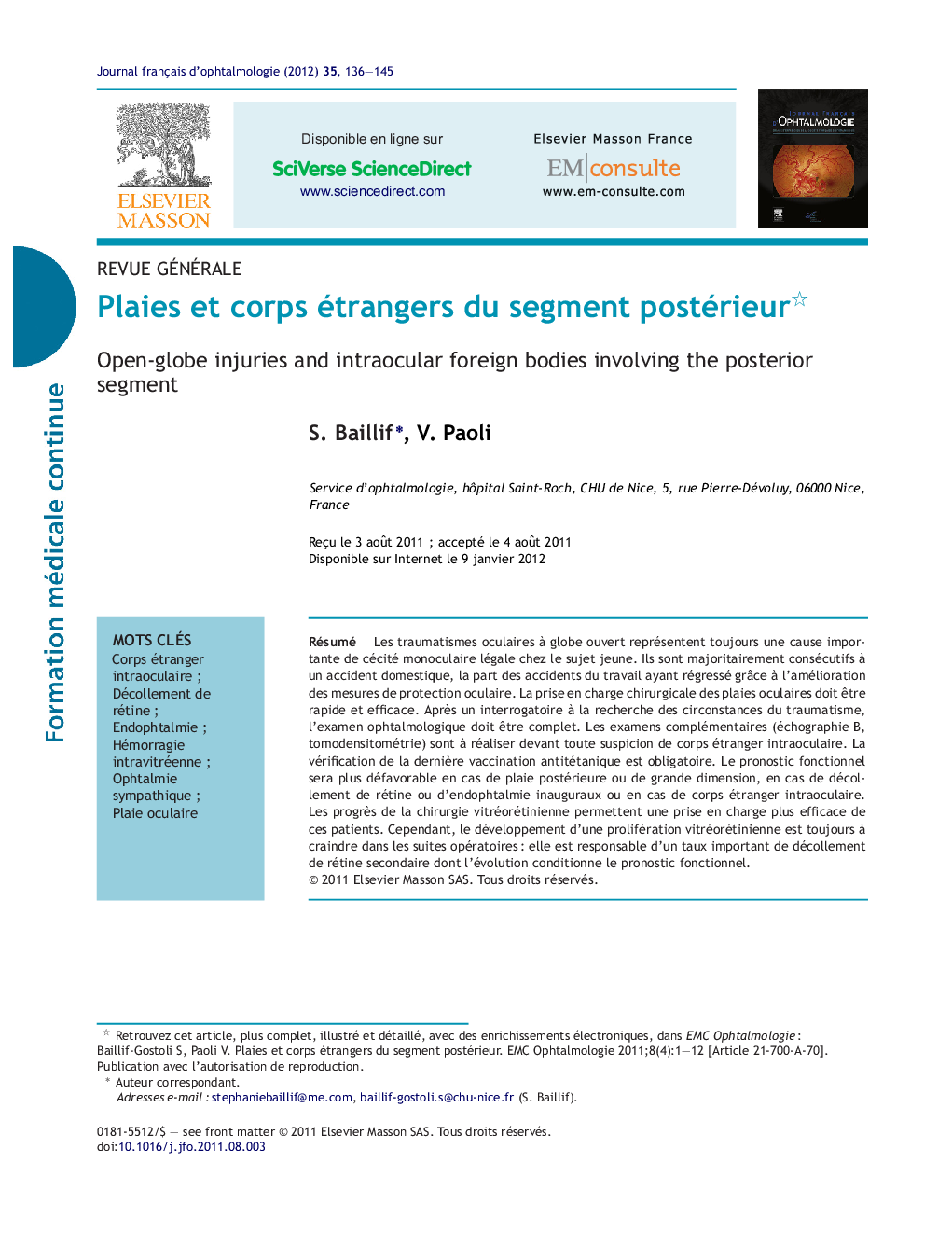| Article ID | Journal | Published Year | Pages | File Type |
|---|---|---|---|---|
| 4023836 | Journal Français d'Ophtalmologie | 2012 | 10 Pages |
Abstract
Open globe injuries involving the posterior segment remain a major cause of visual loss in young adults. They occur more frequently in male than in female populations. The majority is due to domestic accidents, since work-related injuries have been decreasing due to proper education and use of safety equipment. However, leisure-related open globe injuries are on the increase. Prompt recognition and treatment of open globe injuries are essential. At presentation, it is necessary to collect etiological data such as cause, nature, time and place of injury. Anti-tetanus immunization must be confirmed. The presenting visual acuity and clinical examination data must be recorded. The lesion type is classified in accordance with the Birmingham Eye Trauma Terminology. Ocular ultrasound or computed tomography is performed for patients suspected of having an intra- or periocular foreign body. Functional prognosis is negatively influenced by a posterior or large rupture, the presence of an intraocular foreign body, the presence of retinal lacerations or retinal detachment, or the occurrence of posttraumatic infectious endophthalmitis. Recent advances in microsurgical techniques such as pars plana vitrectomy and new visualization techniques may improve the anatomical and functional prognosis for these patients. However, postoperative proliferative vitreoretinopathy remains a major concern: it is responsible for a significant rate of secondary retinal detachment with negative consequences for visual prognosis.
Keywords
Related Topics
Health Sciences
Medicine and Dentistry
Ophthalmology
Authors
S. Baillif, V. Paoli,
